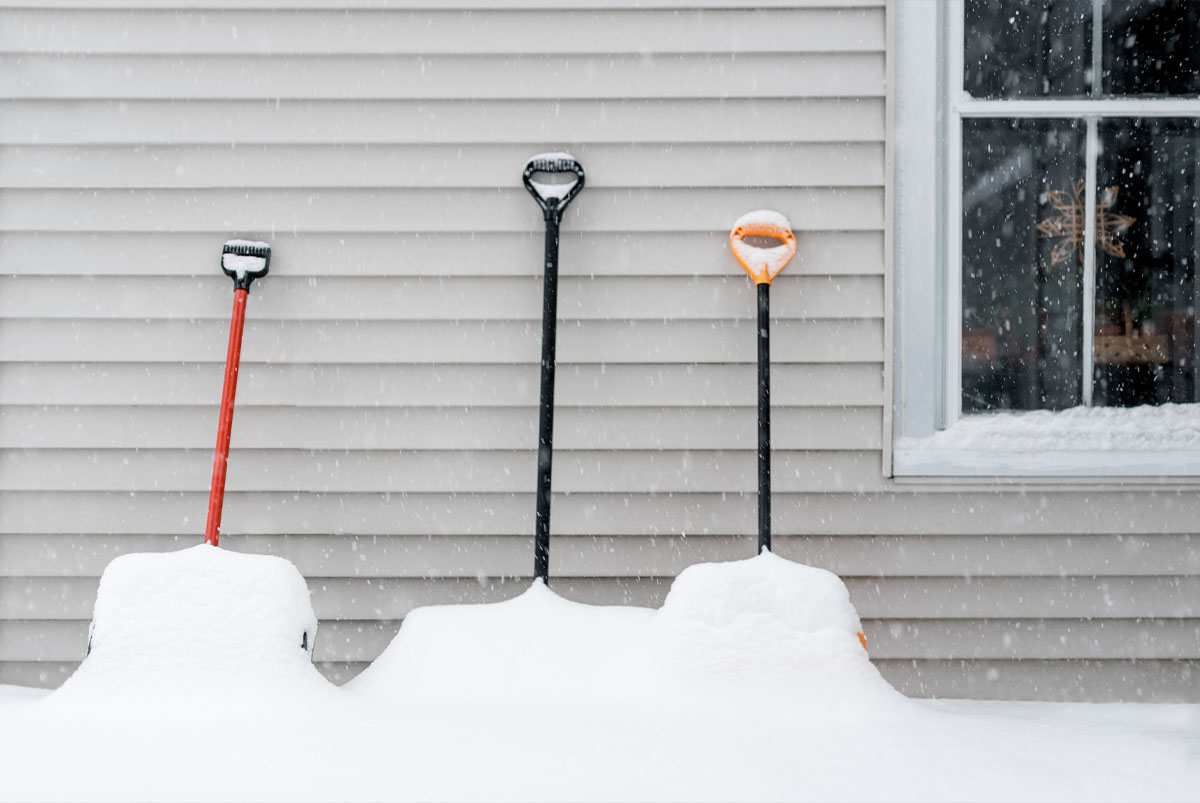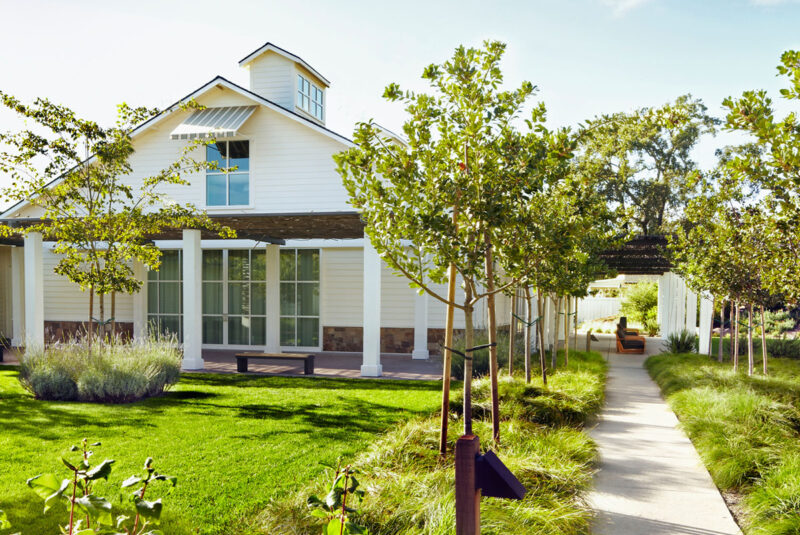Winter is almost here again!
You can already envision hot cocoa by the fire, cozy nights in front of the TV, and weekends spent sledding and building snowmen. But along with all the fun winter brings, there’s also the potential for severe weather – including blizzards.
And if you are not prepared, a blizzard can turn that idyllic winter scene into a nightmare costing you thousands of dollars in repairs, not to mention the danger it poses to you and your family.
So how can you ensure you’re prepared for a winter storm? We have put together a homeowner’s guide to help you get ready for whatever Old Man Winter throws your way.
Preparing Your Home for a Winter Storm
You may not be able to control the weather, but there are steps you can take to prepare your home for a winter storm.
While some of these steps may seem like common sense, you’d be surprised how many people wait until the last minute to do them – and then it’s too late.
So take a few minutes now to review our winter preparedness checklist for homes to ensure you’re ready for whatever Mother Nature has in store.
1. Have your chimney or flue inspected annually
Your chimney is a good place to start when preparing for a winter storm at home. Because chimneys are the main way heat escapes from your home, they are also the main entry point for cold air, snow, and rain.
That’s why it’s crucial to have your chimney or flue inspected by a professional at least once a year. They will clean out any debris that could block the flue and cause a backup of dangerous gasses.
You will also need to invite inspectors if you plan to use a wood-burning stove for emergency heating during a power outage.
The National Fire Protection Association (NFPA) requires that wood-burning stoves be inspected and cleaned yearly by a certified chimney sweep.[1]
Many people think they can burn any type of wood in their fireplace, but this is a dangerous practice. It’s recommended to only burn hardwood in a fireplace, such as oak.
Softwood, like pine, should only be burned outdoors due to the high sap content that can clog chimneys. Make sure to have your flue inspected and cleaned first, or you could end up with a chimney fire.
While a yearly inspection is ideal, you should also have your chimney checked if you notice any of the following: cracks in the mortar, loose bricks, excessive soot buildup, and animals nesting in the chimney.
It could be too late if you wait until there’s a problem to have your chimney inspected. By then, the damage may have already been done, and you could be facing a much larger repair bill or worse.
So, before the weather turns cold, ensure your chimney or flue is inspected and cleaned. It could save you a lot of money and hassle in the long run.
Consider contacting inspectors from chimney and roofing companies that offer chimney sweeping. Find the ones nearest to you online, or contact your local fire department for recommendations.
2. Ensure you have working smoke and carbon monoxide detectors
While we are on the subject of fires, now is also a good time to check your smoke and carbon monoxide detectors.
With the possibility of power outages, many people may resort to alternative heating sources like wood-burning stoves, fireplaces, or even generators.
But if these are not properly ventilated, they can release deadly carbon monoxide gas into your home.
That’s why it’s important to have working smoke and carbon monoxide detectors in your home. These devices will alert you if there are high levels of carbon monoxide in the air, giving you time to get to safety, so you want to ensure they are in good working order.
Test each detector to make sure the batteries are working. If you don’t have batteries, replace them now. It’s also a good idea to write the date you replaced the batteries on the detector, so you know when you need to replace them again.
You should also have at least one fire extinguisher in your home, which should be easily accessible.
Ideally, keep one on each floor of your home. But if that’s not possible, ensure the extinguisher you have is easily accessible in case of an emergency.
Knowing how to use a fire extinguisher before you need it is also a good idea. The last thing you want is to have a fire in your home and not know how to use the extinguisher.
So, before the winter weather sets in, ensure your smoke and carbon monoxide detectors are working properly. And don’t forget to check the batteries!
3. Protect your home’s water pipes
Water pipes are another area of concern during the winter months.
When water freezes, pipes expand and rupture or burst, leading to costly repairs. To prevent this, you need to take some steps to protect your pipes.
First, ensure that all the exposed pipes in your home are insulated, especially pipes in the attic, basement, and crawl spaces.
If you can’t insulate the pipes, you may need to let them drip during cold weather to prevent them from freezing.
You should also keep your home’s thermostat set to at least 55 °F[2], even when you’re not home, to help keep your pipes from freezing.
Additionally, keeping a close eye on any pipes that run along exterior walls is advised. These are more likely to freeze because they are closer to the outside temperature.
If you notice any frost on these pipes, you should take steps to thaw them out as quickly as possible.
Over the years, some homeowners have tried using space heaters to thaw frozen pipes, but this is a dangerous practice.
The best way to prevent your pipes from freezing is to insulate them before the cold weather sets in. You can buy special foam insulation at your local hardware store.
Find out if your pipe is susceptible to freezing. If it is, take measures to protect it. The most vulnerable pipes are those that run against exterior walls or those that are in unheated areas of your home, such as the basement or attic.
If you have vulnerable pipes, there are a few things you can do to protect them:
- Wrap them in foam insulation
- Install heat tape or heat lamps
- Seal any cracks and openings around the pipe
Ultimately, it’s much easier – and cheaper – to prevent your pipes from freezing than having to repair them once they’ve burst. So, get a plumber, if you can, to take a look at your pipes and make sure they are properly insulated.
4. Seal your home’s doors and windows
One of the most common ways cold air can enter your home is through gaps and cracks around doors and windows.
This may happen subtly, and before you know it, your home is drafty and uncomfortable. Not to mention, your heating bill increases as you have to use more energy to heat your home.
Thankfully, you don’t have to hire a professional to seal the cracks and gaps in your doors and windows; you can do it yourself. Here are a few things you can do to prevent cold air from entering your home.
- Use weatherstripping around doors and windows
- Install door sweeps
- Caulk any cracks or gaps around doors and windows
- Install storm doors and windows
You can find all of these materials at your local hardware store. Once you have them, follow the instructions on how to install them.
You can definitely beat the cold this winter by ensuring your home is well-sealed. By doing this, you’ll also be saving money on your heating bill!
Stock Up on Necessities
It’s natural to want to hunker down and ride out a winter storm at home. But, to do that, you must ensure you have everything you need to weather the storm.
Considering how much damage a winter storm can do, it’s always better to be safe than sorry.
The winter storm may cause power outages and make it difficult to leave your home, so it’s important to stock up on necessities.
You don’t want to be stuck in a winter storm without the necessary supplies. Here are some essential items you should stock up on before a blizzard:
- Bottled Water: You should have at least one gallon of water per person daily.
- Food: Non-perishable food items that don’t require cooking are best. Think canned goods, granola bars, etc.
- Medications: Make sure you have enough of any prescription medications you take.
- Hygiene items: Don’t forget items like toilet paper, soap, and toothpaste. Even in a winter storm, you need to be able to maintain good hygiene.
- First-aid kit: A well-stocked first-aid kit is always a good idea especially if someone in your home has a medical condition.
- Flashlights and Batteries: In case of a power outage, you’ll need a way to see in the dark.
If you have pets, don’t forget to stock up on their food and water as well. And, if you have infants or small children, ensure enough diapers and formula are on hand.
Once you have all the essential items, put them in a safe place where you can easily access them if the power goes out.
By being prepared, you can rest assured knowing you and your family will be safe if a winter storm or a blizzard hits.
Preparing for a winter storm FAQs
You can prepare for a winter storm at home by following the winter watch, inspecting your chimney, checking your pipes, sealing your doors and windows, and stocking up on necessities.
Things you should not do before a winter storm include; leaving your windows open, ignoring a winter weather advisory, and driving in a winter storm.
Filling the bathtub with water before a storm can provide you with an emergency water supply in case the power goes out, and you cannot access running water.
Don’t Let the Cold Get You Down
Winter storms and blizzards are natural phenomena that can wreak havoc on homeowners. From power outages to burst pipes, there are several ways a winter storm can damage your home – and your wallet.
By following the winter storm watch and the winter storm warning on your television, mobile phone, NOAA weather radio, or other electronic devices, you can stay ahead of the storm.
Take the necessary steps to protect your home and your family by preparing for a winter storm before it happens. And, most importantly, don’t let the winter storms catch you off-guard!
The Short Version
- The National Fire Protection Association (NFPA) requires that wood-burning stoves be inspected and cleaned yearly by a certified chimney sweep
- You should keep your home's thermostat set to at least 55 °F, even when you're not home, to help keep your pipes from freezing
- By being prepared, you can rest assured knowing you and your family will be safe if a winter storm or a blizzard hits
National Fire Protection Association. “Codes and Standards.” Retrieved October 2022 from https://www.nfpa.org/codes-and-standards/all-codes-and-standards/list-of-codes-and-standards/detail?code=211
City of East Lansing. “Winter Tips for Time Away from Home.” Retrieved 2022 from https://www.cityofeastlansing.com/1690/Winter-Tips-for-Time-Away-from-Home




